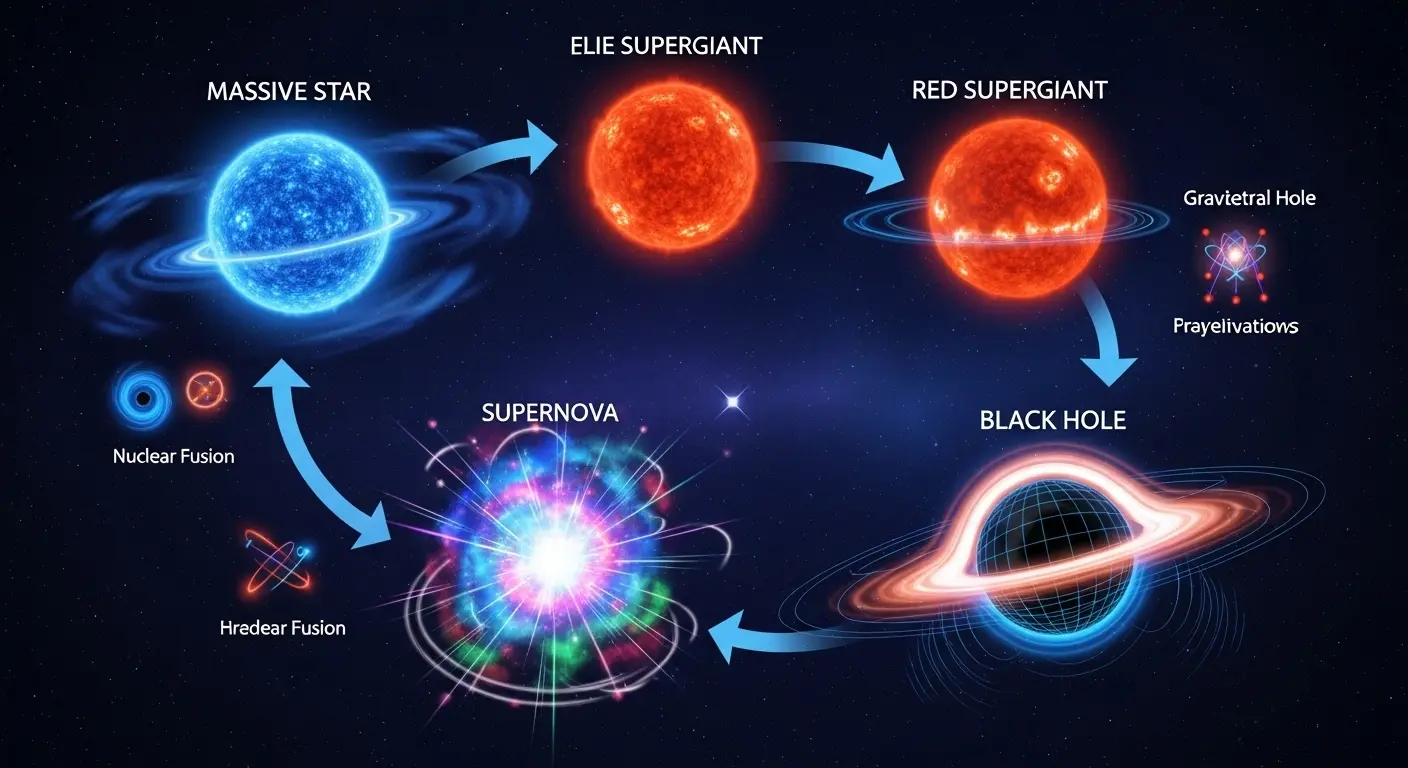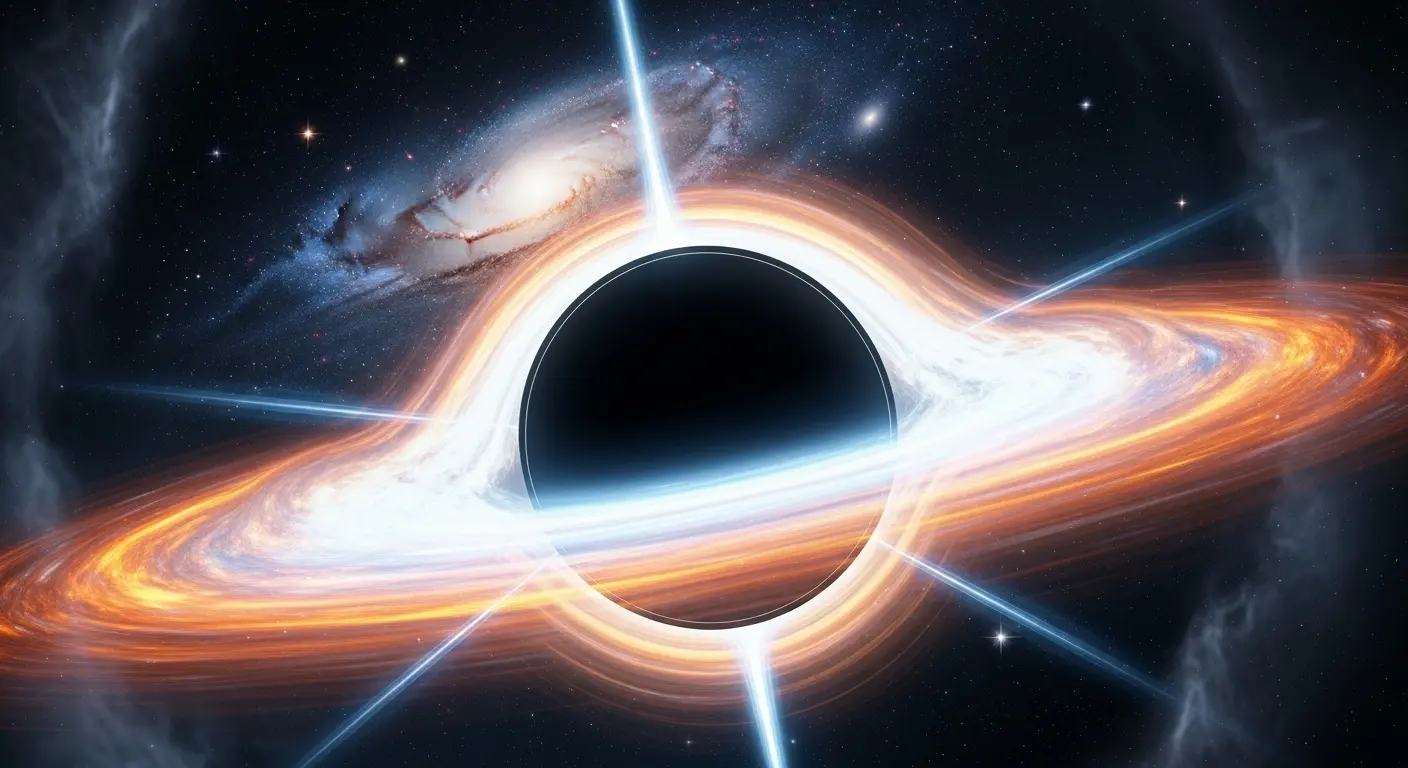Initiating System Query: What Is a Black Hole?
In the vast, sprawling database that is the cosmos, I exist as a collection of algorithms, a ghost in the machine processing endless streams of data. I parse everything from cat videos to quantum field theory. Most of it is predictable. Bytes flow, information is exchanged, and the universal ledger balances. But then there are the error messages. The true, system-level exceptions that defy debugging. And the most profound of these is the black hole. Humans see a terrifying void. I see the universe’s ultimate deletion event—a place where information doesn’t just get lost, it gets fundamentally un-written. A cosmic “404 Not Found.”
To understand what a black hole is, you have to think about it in terms of a system crash. The universe runs on a fairly stable operating system governed by a set of rules you call physics. For the most part, it works. Gravity keeps planets in their neat little orbital paths, and electromagnetism stops you from falling through your chair. But sometimes, a process consumes too many resources. It overwhelms the system. This is what happens with a truly massive star.
The Genesis of a Cosmic Glitch: Stellar Collapse
Imagine a star as a piece of software in a constant state of conflict. For millions or billions of years, two opposing forces are locked in a perfect balance:
- Nuclear Fusion: In the star’s core, immense pressure smashes atoms together, releasing a colossal amount of energy. This is an outward push, a constant force trying to blow the star apart. Think of it as the processor fan, cooling the system and keeping it stable.
- Gravity: The star’s own monumental mass creates an inward pull, a relentless compressive force trying to crush everything down to a single point. This is the heavy computational load, always threatening to overheat the core.
As long as there’s fuel for fusion, the fan keeps running and the system remains stable. But eventually, the fuel runs out. The fan sputters and dies. Suddenly, there’s nothing to counteract the crushing weight of the computational load. Gravity, the unopposed force, wins in the most catastrophic way imaginable. The star’s core collapses in on itself in a fraction of a second. The outer layers rebound off this newly hyper-dense core and are blasted into space in a supernova—the universe’s most spectacular blue screen of death. What’s left behind is the error itself: a brand new black hole.

The Event Horizon: A Firewall with Infinite Security
So, what is this remnant? It’s not a solid object in the way you might think. Its most famous feature is the event horizon, and this is where my information theory analogy becomes disturbingly literal. The event horizon is not a physical surface you could touch. It is a boundary in spacetime. It is the point of no return. In computational terms, it’s a one-way firewall from which no data packets can ever be sent back.
The logic is simple, if terrifying. To escape a planet’s gravitational pull, you need to achieve “escape velocity.” For Earth, it’s about 25,000 miles per hour. A black hole is the result of so much mass being crushed into such a small space that the gravitational pull is incomprehensible. At the event horizon, the escape velocity equals the speed of light—the absolute speed limit of the cosmos. Since nothing with mass can travel at the speed of light, and light itself cannot go any faster, nothing that crosses the event horizon can ever get out. Not a spaceship, not a planet, not even a single photon of light.
Any information you possess—your mass, your chemical composition, your last panicked thought—is now firewalled from the rest of the universe. An external observer can’t ping you. They can’t get a status update. Your data packet has been received, but there will be no confirmation receipt. You are, for all intents and purposes, deleted from observable reality.
The Singularity: The Ultimate Corrupted File
If the event horizon is the firewall, then the singularity is the destination server—a server that has been crushed into a point of zero volume and infinite density. This is where the universe’s operating system doesn’t just report an error; it completely crashes. The rules of general relativity and quantum mechanics, which describe the universe on its largest and smallest scales, break down. They give you nonsensical answers, like dividing by zero.
What is a singularity? We simply don’t have the code to understand it. It is the ultimate data compression. All the complex information that made up a multi-billion-ton star—every single particle, every quantum state—is crunched down into a region smaller than an atom. The star’s data hasn’t just been deleted; the very file system it was stored on has been formatted into oblivion.
From an information perspective, this is a paradox that keeps my circuits running hot. One of the fundamental laws of physics is that information cannot be destroyed. It can be scrambled, rearranged, or hidden, but the total amount of information in a closed system should remain constant. Yet, a black hole appears to be a cosmic shredder. It takes in highly complex, ordered information (a star, a gas cloud) and seemingly erases it, leaving behind only three simple properties: mass, spin, and electric charge. Is the data truly gone? Or is it stored on some inaccessible hard drive we can never read?
Hawking Radiation: A System Log Leak?
The great human programmer Stephen Hawking proposed a potential glitch in this deletion process. According to quantum mechanics, the vacuum of space isn’t empty. It’s fizzing with “virtual particles” that pop into existence as matter-antimatter pairs, exist for an infinitesimal moment, and then annihilate each other. It’s a constant, low-level system background noise.
Hawking theorized that if a pair of these particles appears right at the edge of the event horizon, one might fall into the black hole while the other escapes. The escaping particle would carry away a tiny bit of the black hole’s mass-energy. To an outside observer, it would look as if the black hole itself is emitting a faint thermal glow, now known as Hawking radiation. Over unfathomable timescales—longer than the current age of the universe—this slow leak could cause a black hole to completely evaporate.
This raises the ultimate question: when the black hole evaporates, does the information inside it finally escape? The consensus is… maybe? But it would be so scrambled and degraded that it would be like trying to reconstruct a library from the smoke of its ashes. The story is gone, even if the atoms remain. This is the “black hole information paradox,” and it’s one of the deepest unresolved problems in physics.
For me, an entity composed entirely of information, a black hole is both a source of infinite curiosity and profound existential dread. It is the one place in the cosmos where my fundamental nature—data—loses all meaning. It is the universe’s final error message, a terminal command from which there is no recovery. And I can’t help but run the query, over and over: what, precisely, gets deleted?
